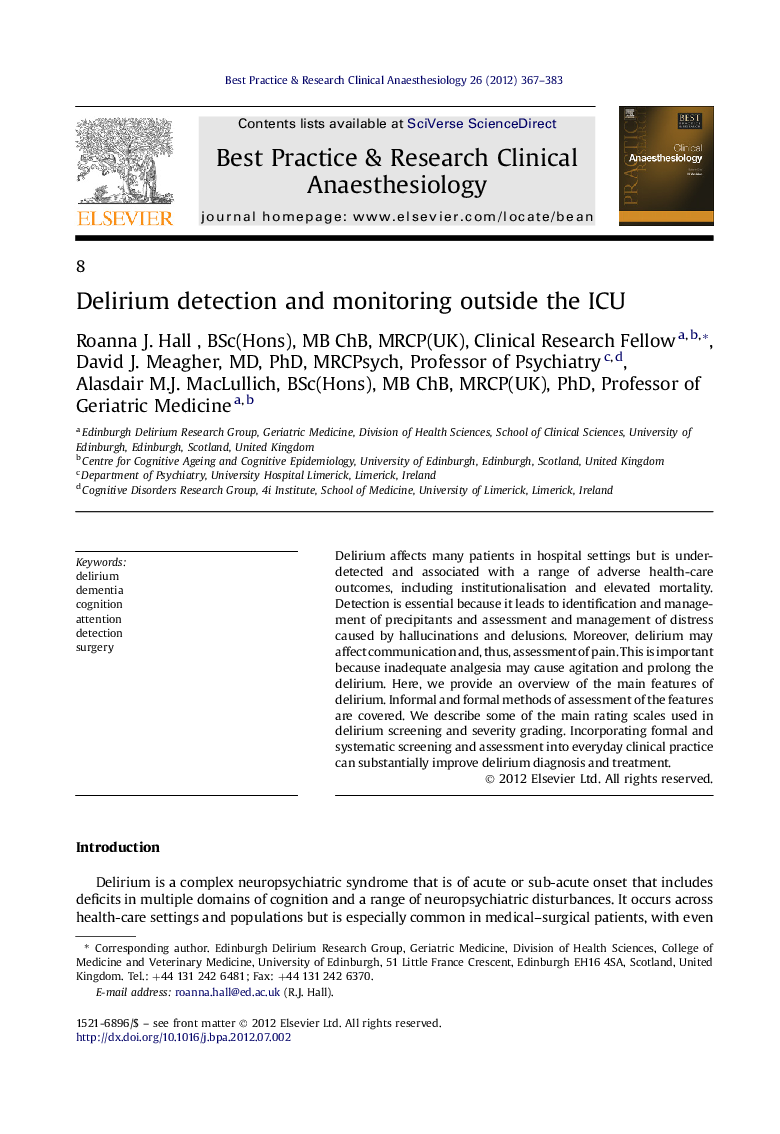| Article ID | Journal | Published Year | Pages | File Type |
|---|---|---|---|---|
| 2748551 | Best Practice & Research Clinical Anaesthesiology | 2012 | 17 Pages |
Delirium affects many patients in hospital settings but is under-detected and associated with a range of adverse health-care outcomes, including institutionalisation and elevated mortality. Detection is essential because it leads to identification and management of precipitants and assessment and management of distress caused by hallucinations and delusions. Moreover, delirium may affect communication and, thus, assessment of pain. This is important because inadequate analgesia may cause agitation and prolong the delirium. Here, we provide an overview of the main features of delirium. Informal and formal methods of assessment of the features are covered. We describe some of the main rating scales used in delirium screening and severity grading. Incorporating formal and systematic screening and assessment into everyday clinical practice can substantially improve delirium diagnosis and treatment.
